As someone who’s spent countless hours wandering Venice’s maze-like streets and canals, I’m often asked for advice about visiting this unique Italian city. The truth is, describing Venice in simple terms isn’t easy – each corner tells its own story, and every bridge leads to a new discovery.
“Venice is like a living museum, but it’s also a real city where people live and work,” says Marco Rossi, a local guide who’s been showing visitors around for over two decades. “Most tourists stick to the main spots, but Venice has so many hidden places that even after years here, I still find new treasures.”
While you could spend weeks exploring every corner of the city, most visitors have limited time. That’s why I’ve put together this list of 20 places that’ll give you a genuine taste of what makes Venice special – from the must-see landmarks to the quiet spots where locals actually hang out.
- Best tourist destination: St. Mark’s Basilica
- Underrated hidden gem: Palazzo Contarini del Bovolo
- Best for families: Lido Beach
- Best for couples: Rialto Bridge
- Best for solo travelers: Libreria Acqua Alta
- Best local experience: Mercati di Rialto
St. Mark’s Basilica

Ever walked into a church that feels like stepping into a golden dream? That’s exactly what you’ll experience at St. Mark’s Basilica, the crown jewel of Venice’s famous St. Mark’s Square. Built in the 11th century, this Byzantine masterpiece showcases more than 8,000 square meters of shimmering gold mosaics that tell stories from the Bible across its domed ceilings. The church’s unique blend of Eastern and Western architecture reflects Venice’s historic role as a bridge between cultures, with its five distinctive domes and ornate marble columns becoming symbols of the city’s past wealth and power. Inside, you’ll find the famous Pala d’Oro, a golden altar screen studded with thousands of precious gems, while the museum upstairs houses the original bronze horses that once stood guard outside.
Rialto Bridge

Have you ever crossed the most famous bridge in Venice? The Rialto Bridge has been the heart of the city’s commercial life since 1591, arching gracefully over the Grand Canal. This architectural marvel, crafted entirely from white marble, tells stories of countless merchants who once traded precious silks and spices beneath its porticos. Today, it’s where you’ll find tourists and locals alike, browsing the small shops that line its steps or pausing to watch the gondolas glide beneath. You can join the crowd at sunset, when the bridge offers perfect views of the canal’s golden reflections, or visit early morning when the market sellers set up their colorful displays of fresh fish and local produce nearby.
Doge’s Palace

Few places in Venice tell the story of the city’s power and grandeur quite like the Doge’s Palace. Standing proudly in St. Mark’s Square since the 14th century, this Gothic masterpiece served as both the residence of Venice’s rulers and the center of the republic’s government. As you walk through its marble-clad halls and across the infamous Bridge of Sighs, you’ll find yourself following in the footsteps of nobles, prisoners, and politicians who shaped Venice’s history. The palace’s rooms showcase an impressive collection of artwork by Italian masters, while the dark prison cells below remind visitors of the building’s more somber role. What makes the Doge’s Palace special isn’t just its architecture or art – it’s how the building brings Venice’s complex past to life, from its days as a mighty maritime republic to its eventual decline.
Grand Canal
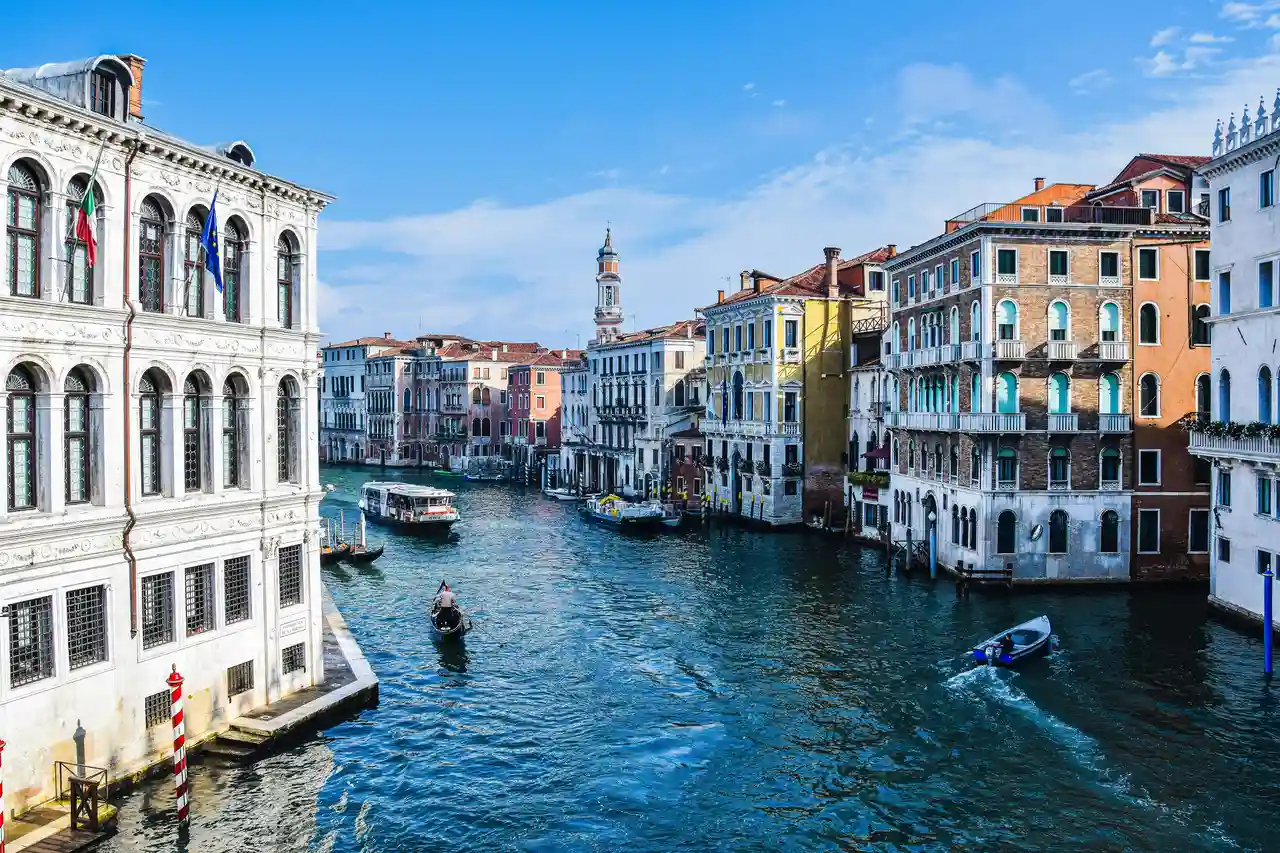
Like a liquid main street running through the heart of Venice, the Grand Canal snakes its way through the city in a reverse S-shape for about 2.4 miles. This busy waterway has been the city’s primary thoroughfare since the days of the maritime republic, lined with more than 170 buildings that date back to the 13th century. Most visitors experience the canal by vaporetto (water bus), but you’ll also see gondolas and water taxis navigating between the palaces and under the four bridges that span its waters. The Rialto Bridge, the oldest of these crossings, has watched over the canal since 1591, serving as both a landmark and a reminder of Venice’s golden age. The canal is especially lively at sunset when the fading light plays off the water and the palazzo facades take on a golden glow.
Piazza San Marco
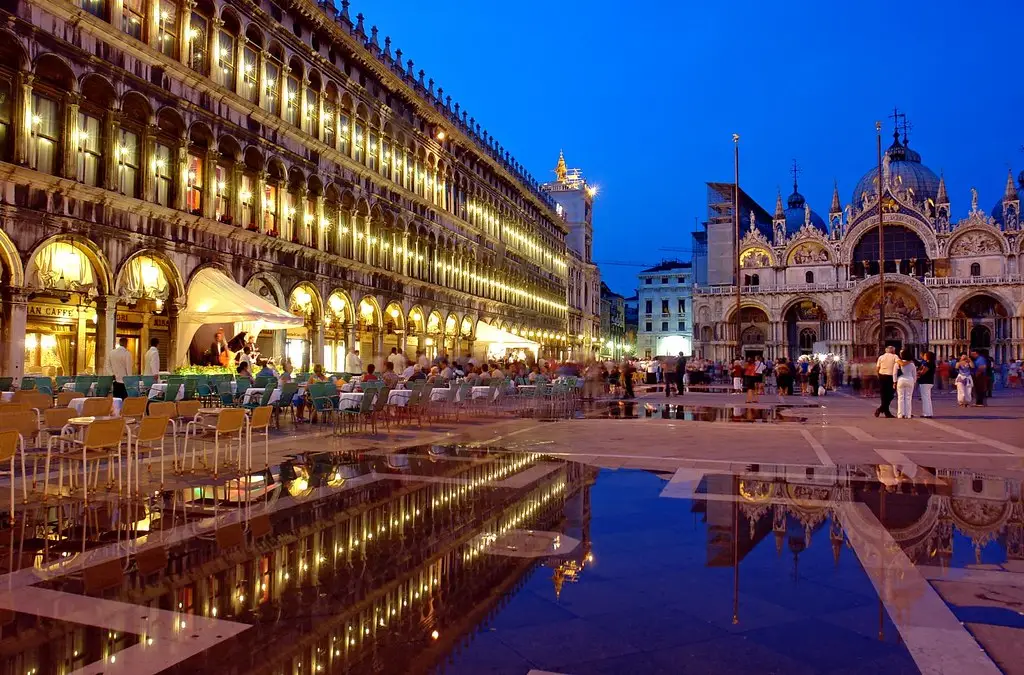
If there’s one spot that truly represents the heart and soul of Venice, it’s Piazza San Marco. This massive public square has been the city’s main gathering place for over 1,000 years, serving as both a cultural hub and political center throughout Venice’s history. You’ll find yourself surrounded by architectural gems like the towering Campanile bell tower and the ornate St. Mark’s Basilica, whose Byzantine domes and golden mosaics tell stories of Venice’s wealthy past. The square comes alive in the early mornings when locals grab their espresso at historic cafes, and again at dusk when orchestras play classical music under the arched colonnade. Just be prepared – it’s also the city’s most visited spot, so you’ll want to arrive early to avoid the crowds and maybe even catch those famous Venetian pigeons having their breakfast.
Bridge of Sighs

Have you ever wondered why a bridge would make prisoners sigh? That’s the story behind Venice’s famous Bridge of Sighs, a covered limestone bridge connecting the Doge’s Palace to the city’s old prison cells. Legend says that convicted criminals would take their last glimpse of beautiful Venice through the bridge’s tiny windows before being locked away, letting out deep sighs as they said goodbye to freedom. Today, you can walk across this historic passage during palace tours, or join the crowds of tourists snapping photos from the nearby Ponte della Paglia. For the best experience, hop on a gondola and float beneath the bridge at sunset, when the warm light makes the white stone glow and you can imagine those long-ago sighs echoing across the canal.
Bet You Didn’t Know:
Legend has it that the Bridge of Sighs got its name from the heartbreaking sounds made by prisoners who crossed it on their way from the Doge’s Palace to the nearby prison cells, catching their final glimpse of beautiful Venice through its tiny windows. While tourists today snap countless photos of this iconic 17th-century enclosed bridge, most don’t realize that the “sighs” were actually more likely to have been groans of seasickness from prisoners swaying on the canal crossing rather than romantic last looks at the city.
Murano Island
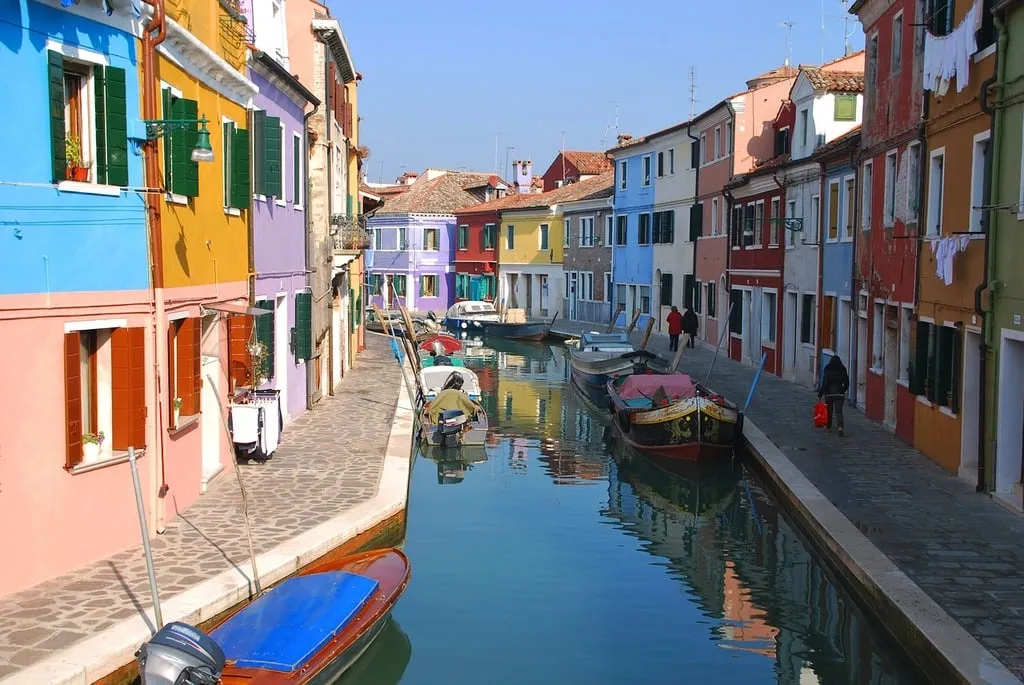
Just a short boat ride from Venice’s main islands sits Murano, a collection of smaller islands linked by bridges and canals. Dating back to 1291, when Venice’s glassmakers were forced to relocate here due to fire risks, Murano has been the heart of Venetian glassmaking ever since. Walking through the island’s narrow streets, you’ll find countless workshops and showrooms where master craftsmen continue centuries-old traditions. The Museo del Vetro (Glass Museum), housed in an old palace, tells the story of this ancient craft through colorful displays of historic pieces. While many visitors come for the famous glass demonstrations, the quiet canals and less-crowded pathways offer a peaceful escape from Venice’s busy tourist center, making it perfect for an afternoon of wandering and watching boats glide by.
Basilica di Santa Maria della Salute
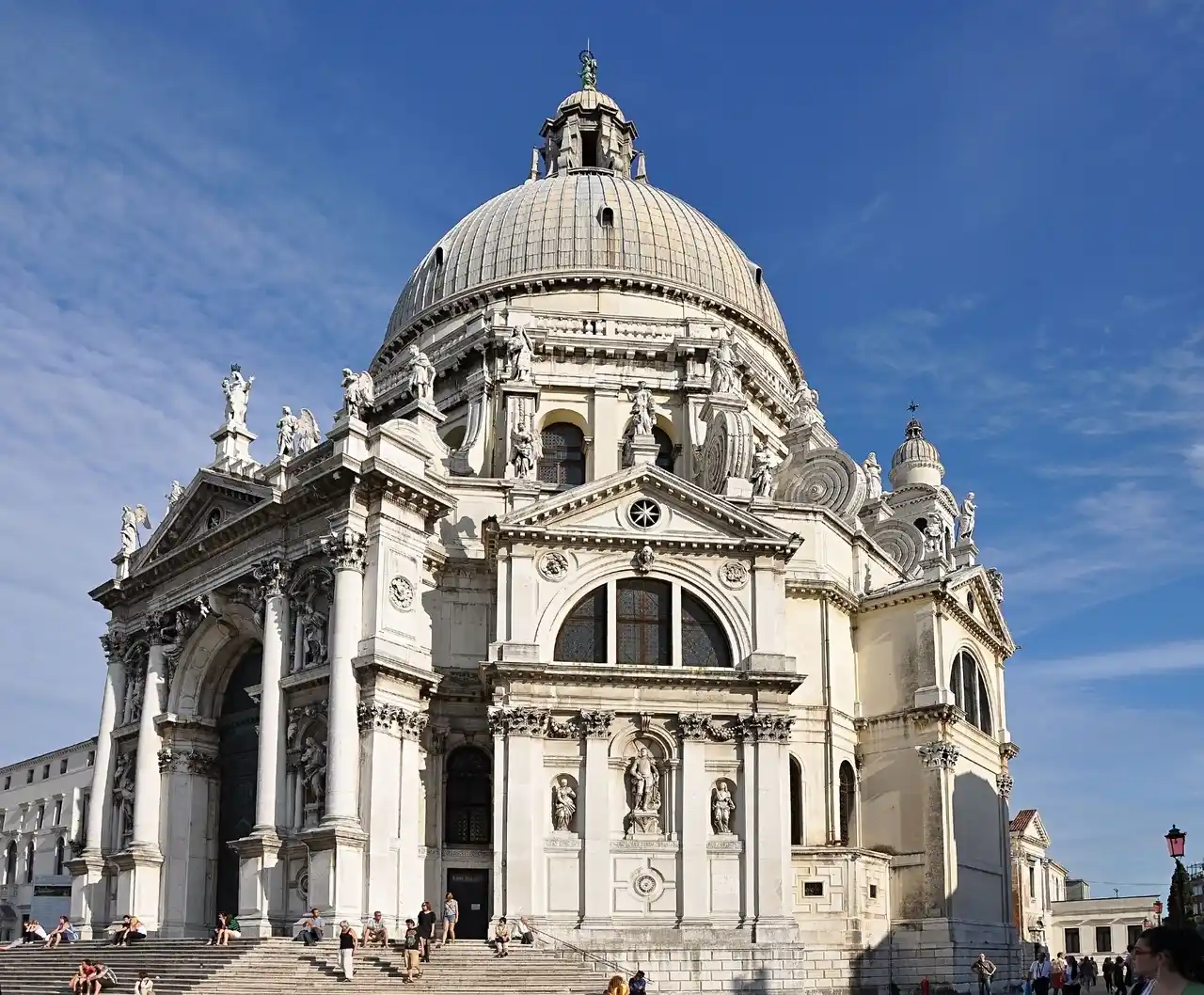
Many travelers come to the Basilica di Santa Maria della Salute for its grand dome that dominates Venice’s skyline, but this 17th-century church offers much more than just architectural beauty. The marble structure, built as a thank-you to the Virgin Mary for delivering Venice from a devastating plague, stands guard at the entrance to the Grand Canal. Inside, you’ll find impressive artworks by Titian and Tintoretto, while the octagonal design and spiraling staircases make it a favorite among architecture enthusiasts. Though most visitors snap photos from across the water, stepping inside reveals rich biblical scenes painted on the ceiling and intricate details that tell the story of Venice’s maritime past.
Burano Island

Ever wondered what it would be like to live in a rainbow? That’s exactly what you’ll experience on Burano Island, a small fishing village just 40 minutes by boat from Venice’s main canals. This cheerful island is famous for its rows of colored houses, where each building sports a different shade, creating a patchwork of blues, pinks, yellows, and greens along the waterways. Local fishermen started this tradition centuries ago to help them spot their homes through the thick fog after long days at sea. Today, it’s not just about the colors – Burano is known for its handmade lace (there’s even a museum dedicated to the craft) and fresh seafood restaurants where you can watch boats bob in the harbor while enjoying a plate of just-caught fish.
Gallerie dell’Accademia
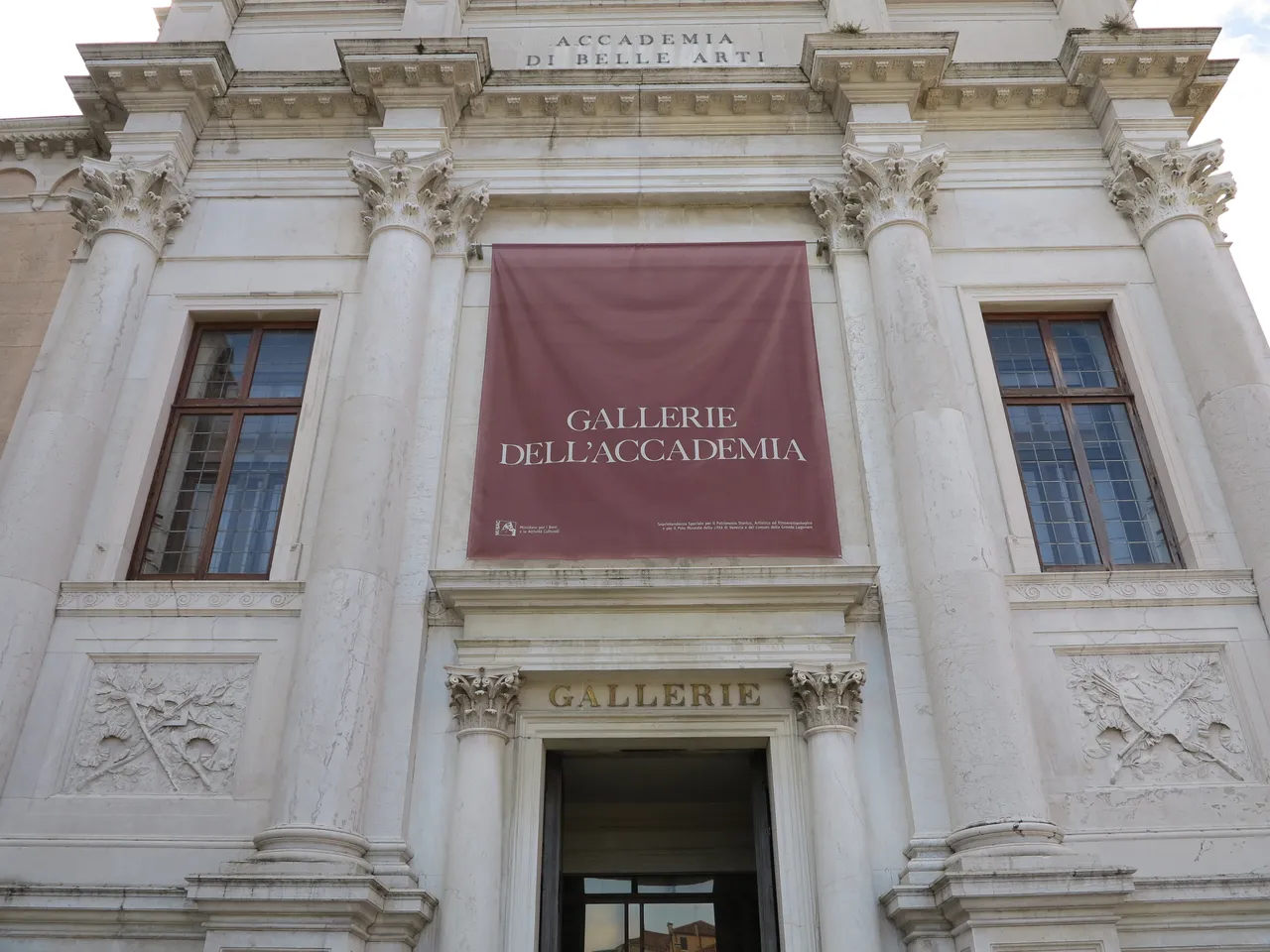
Inside a former religious complex on the south bank of the Grand Canal sits Venice’s premier art museum, the Gallerie dell’Accademia. Home to the largest collection of Venetian art from the 14th to 18th centuries, this gallery tells the story of Venice through paintings that once decorated the city’s churches and palaces. As you walk through its halls, you’ll find yourself face-to-face with masterpieces by Bellini, Titian, and Veronese, each canvas revealing a different chapter of Venice’s golden age. While other museums in the city might draw bigger crowds, the Accademia offers something special – a chance to see Venice through the eyes of the artists who knew her best. The museum’s location in the artsy Dorsoduro district means you can easily combine your visit with stops at nearby cafes and local art studios.
Palazzo Contarini del Bovolo
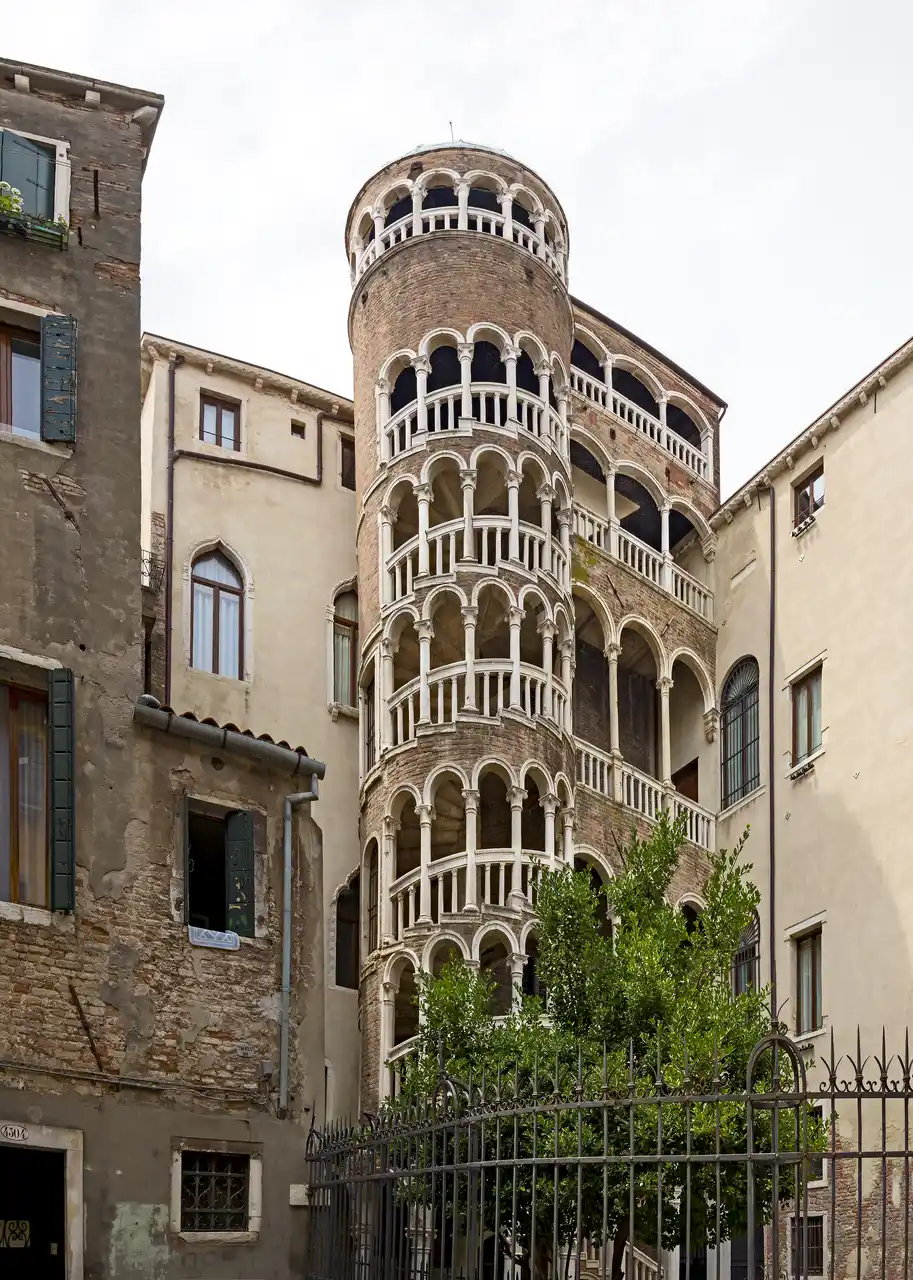
Tucked away in the heart of Venice, I first discovered Palazzo Contarini del Bovolo in 2019 while wandering the city’s maze-like streets. This hidden architectural gem stands out for its external spiral staircase that winds gracefully up the palace facade like a snail shell – in fact, “bovolo” means snail in Venetian dialect. The 15th-century palace combines Gothic and Renaissance styles in a way that feels distinctly Venetian, with its delightful arcades and detailed stonework catching the eye at every turn. From the top of its 80-foot staircase, visitors can take in sweeping views across Venice’s terracotta rooftops and bell towers, making it one of the city’s best spots for photographers looking to capture the essence of La Serenissima from above.
Basilica dei Frari

If there’s one church in Venice that truly captures the city’s artistic soul, it’s the Basilica dei Frari. This massive Gothic church might look plain from the outside, but step inside and you’ll find yourself surrounded by some of Italy’s most important religious artworks. What makes this place special isn’t just its size – it’s the incredible collection of masterpieces by Titian and other Renaissance artists that cover its walls. The church has been here since the 1300s, serving as both a place of worship and a museum of sorts, where you can wander between towering marble tombs and colorful paintings that tell stories of Venice’s golden age. It’s a bit off the usual tourist path in the San Polo district, which means you can often explore its treasures without fighting through crowds.
Lido di Venezia

Many visitors head to Lido di Venezia for its long stretch of sandy beach, but this narrow island is much more than just a seaside escape from Venice’s busy canals. The 11-kilometer barrier island offers a peaceful alternative to the main city, with tree-lined streets perfect for cycling and charming art deco buildings that tell stories of its glamorous past. While the Venice Film Festival draws crowds every September with red carpet events and movie premieres at the historic Palazzo del Cinema, you can find plenty of quiet moments here year-round. Whether you’re taking a dip in the Adriatic Sea, playing golf at Italy’s first golf course, or simply enjoying an afternoon aperitivo at one of the beach clubs, Lido provides a refreshing break from Venice’s tourist-filled squares.
Cannaregio District

If you want to experience the real Venice away from the tourist crowds, head to the Cannaregio district. This laid-back neighborhood in the northern part of Venice gives you a glimpse into authentic local life, with its quiet canals, traditional restaurants, and historic Jewish Quarter. You’ll find residents going about their daily routines, clothes hanging from windows to dry, and plenty of family-run bacari (wine bars) serving delicious cicchetti (Venetian tapas).
Mind-Blowing Fact:
Did you know Venice’s Cannaregio district was home to the world’s first Jewish ghetto, established in 1516, where Jewish residents were confined at night behind locked gates? Today, this historic area remains the heart of Venice’s Jewish community and features five beautiful synagogues that tell the story of different Jewish traditions from across Europe.
Campo Santa Margherita
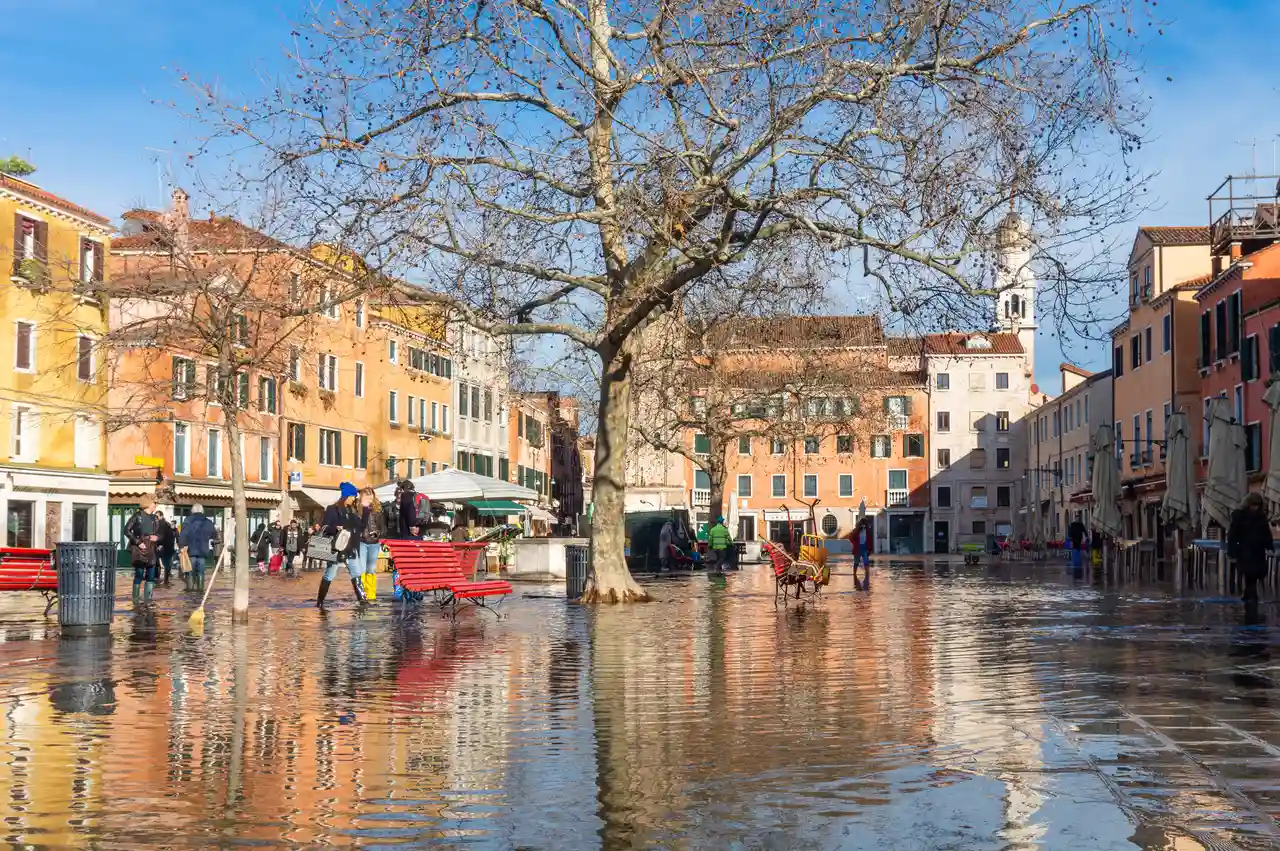
Many visitors flock to Campo Santa Margherita for its lively student atmosphere, as it’s one of Venice’s few squares that isn’t overrun with tourist crowds. This bustling campo serves as the heart of the Dorsoduro district, where locals gather at casual cafes and bars that line the rectangular plaza. During the day, you’ll find a small but charming market selling fresh fish and produce, while evenings transform the space into a social hub where university students and residents mix over aperitivos. Unlike many of Venice’s more famous squares, Campo Santa Margherita offers an authentic slice of daily Venetian life, complete with children playing soccer, elderly neighbors chatting on benches, and clothes hanging from windows above the surrounding buildings.
Peggy Guggenheim Collection

Housed in an unfinished 18th-century palace along the Grand Canal, the Peggy Guggenheim Collection stands as one of Europe’s most important modern art museums. Unlike the city’s abundance of Renaissance and Byzantine treasures, this museum offers a refreshing dive into 20th-century art. As you walk through the former home of the eccentric American art collector Peggy Guggenheim, you’ll find yourself surrounded by works from Picasso, Dalí, and Pollock. The museum’s sculpture garden adds another layer to the experience, while the palazzo’s terrace gives you a perfect view of Venice’s waterways. Because of Guggenheim’s personal connection to many of the artists, each room tells a story beyond the artworks themselves, making this place feel more like a well-loved home than a traditional museum.
San Giorgio Maggiore

Step away from the tourist crowds and take a peaceful boat ride to San Giorgio Maggiore, a small island that offers one of the best views of Venice. You can climb to the top of the bell tower for a perfect bird’s-eye view of St. Mark’s Square and the Grand Canal without the long lines you’ll find at other viewpoints. The 16th-century church, designed by famous architect Andrea Palladio, welcomes visitors with its bright white marble facade and impressive dome. Inside, you’ll discover two original paintings by Tintoretto, while the monastery’s grounds provide a quiet escape with beautifully maintained gardens.
Scuola Grande di San Rocco
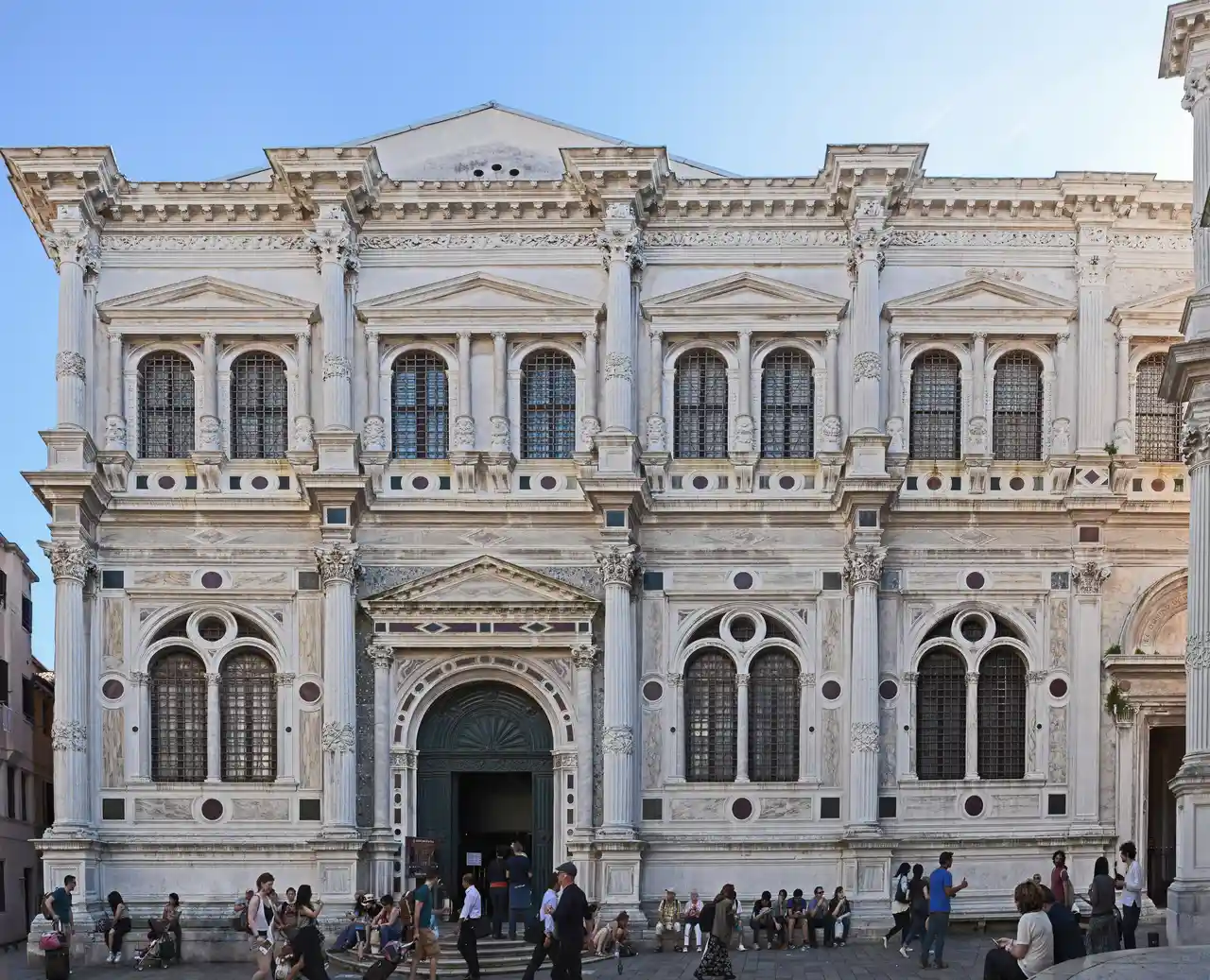
Art enthusiasts flock to the Scuola Grande di San Rocco for its remarkable collection of Tintoretto paintings, but this 16th-century building offers much more than just artwork. The structure itself stands as one of Venice’s most impressive examples of Renaissance architecture, with its grand marble facade and ornate interiors. While most visitors come to see the famous ceiling paintings in the upper hall, the building’s lower halls house lesser-known treasures, including intricate wood carvings and religious artifacts. Even if you’re not an art expert, the audio guide helps bring the stories behind each masterpiece to life, making it easy to understand why this place has been drawing visitors for over 500 years.
Ca’ d’Oro

One of Venice’s most beautiful Gothic palaces sits proudly along the Grand Canal, its white marble façade catching the morning light. Ca’ d’Oro, or the “Golden House,” earned its name from the gold leaf that once decorated its exterior walls. Built in the 1400s, this palazzo tells the story of Venice’s wealthy merchant families through its mix of Venetian and Ottoman architectural details. Inside, you’ll find an art museum housing pieces collected by Baron Giorgio Franchetti, who saved the building from falling into disrepair in the late 1800s. What makes this place special isn’t just the architecture – it’s how it lets you peek into the lives of Venice’s medieval elite while offering some of the best canal views in the city from its loggia.
Arsenale di Venezia
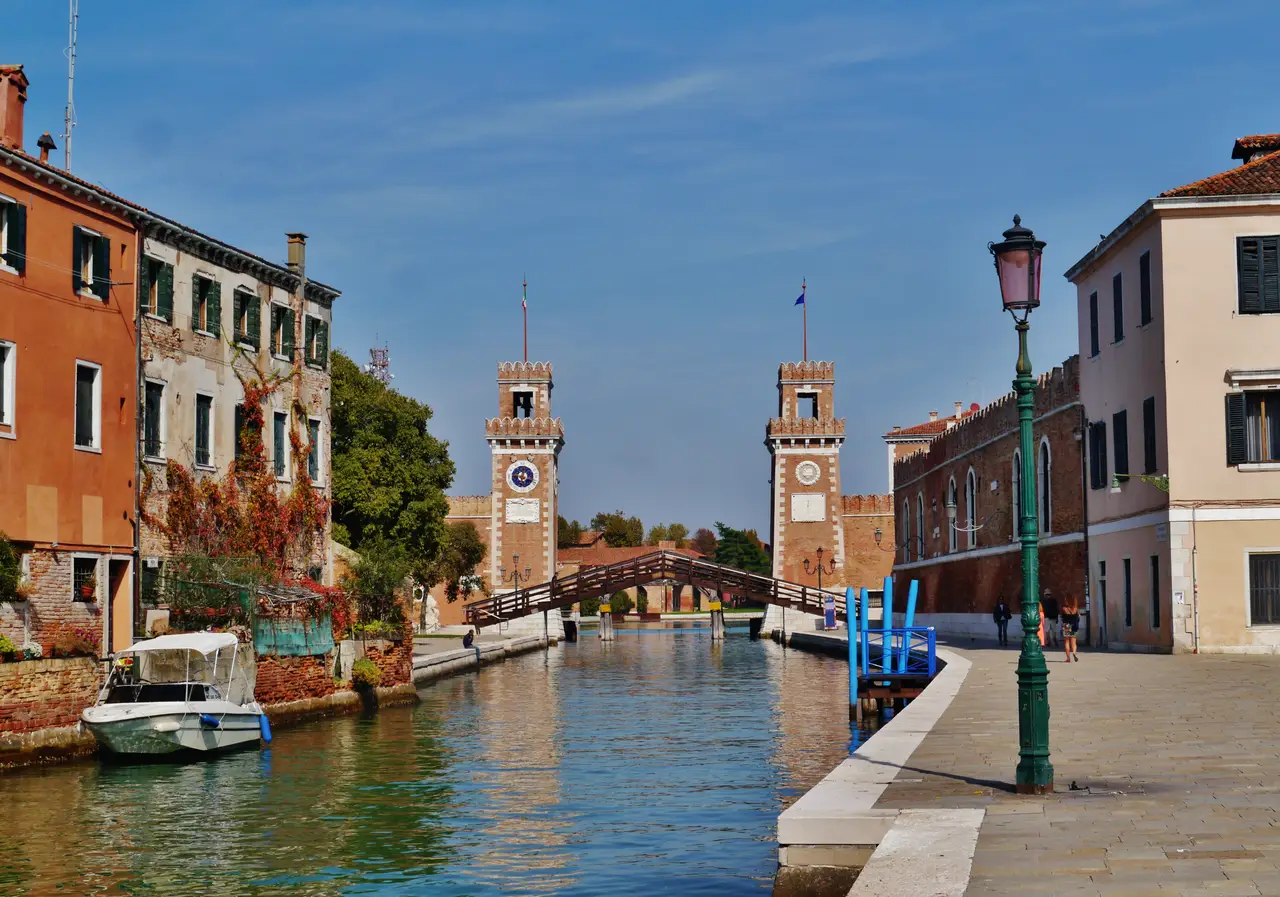
Dating back to the 12th century, the Arsenale di Venezia stands as one of Venice’s most important historical sites. Once the largest shipyard in medieval Europe, this sprawling complex of workshops and warehouses helped build the mighty Venetian naval fleet that ruled the Mediterranean. The red brick walls and arched gates stretch along the waterfront in the Castello district, leading visitors through centuries of maritime history. Inside, you’ll find a mix of exhibition spaces and naval museums, while the original rope-making building – at 316 meters long – still impresses with its scale. During the Venice Biennale, the Arsenale transforms into a major venue for contemporary art exhibitions, bringing new life to these ancient industrial halls where thousands of workers once crafted the vessels that made Venice a seafaring powerhouse.